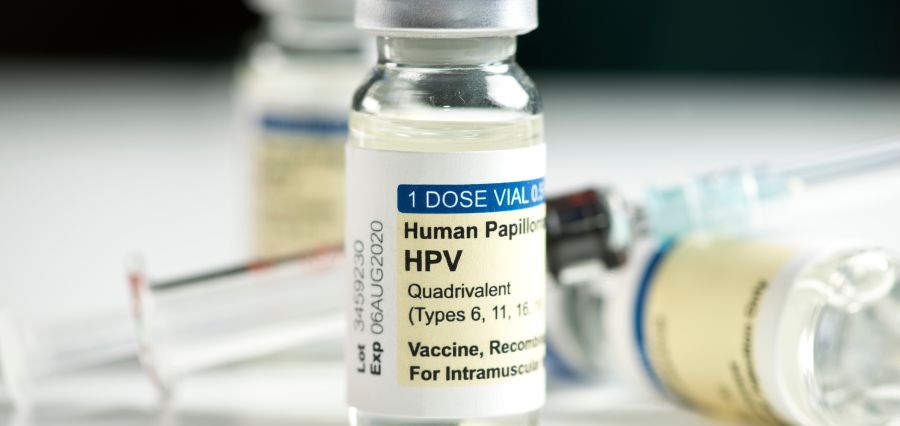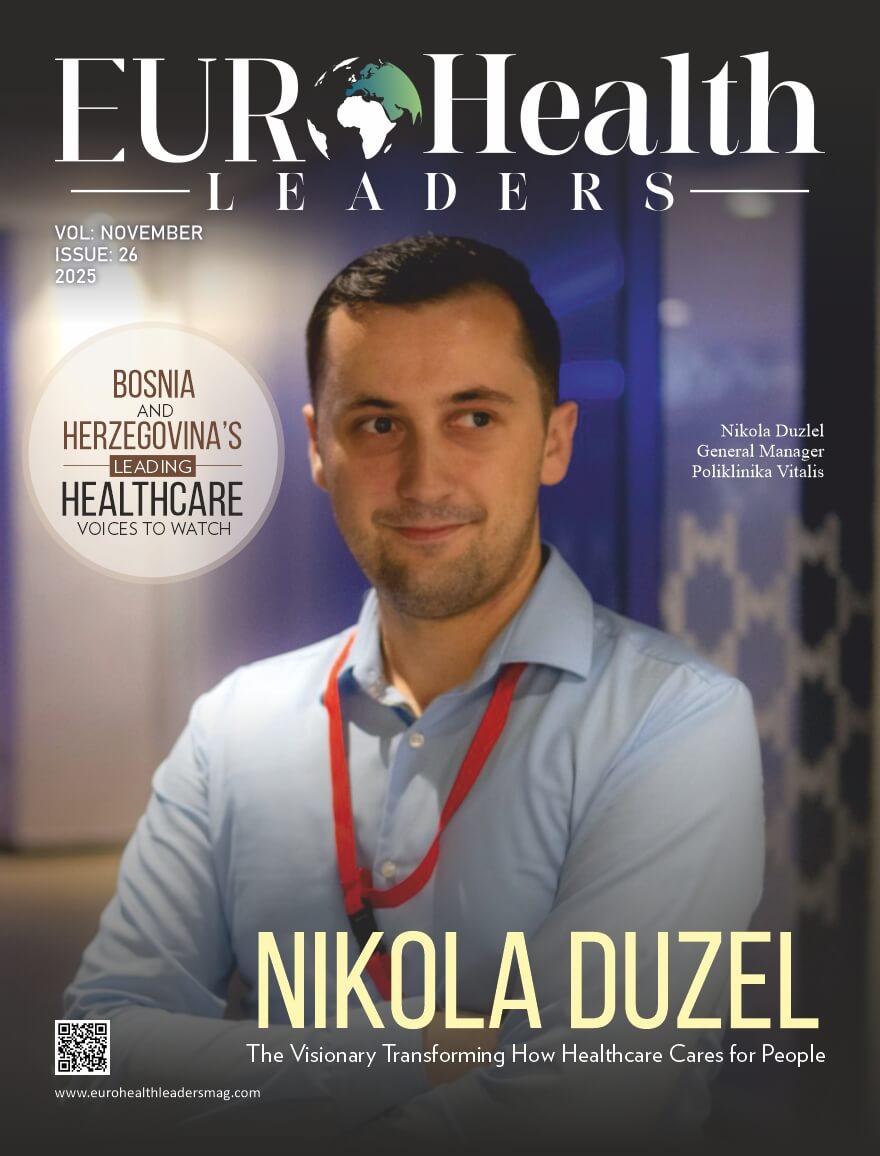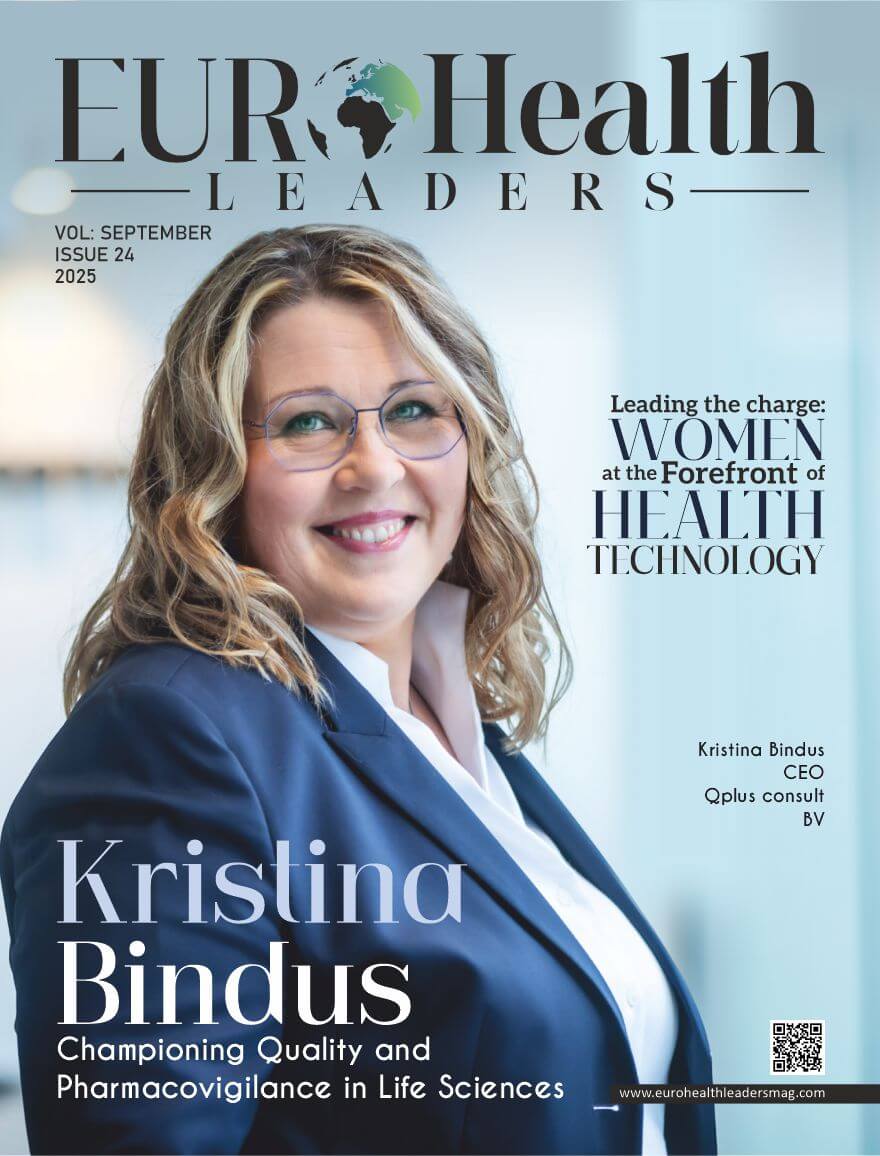In healthcare, time makes all the difference. A delayed diagnosis can mean a missed opportunity to treat, and for many patients, that wait can feel endless. Infections worsen. Decisions are made without clarity. And the tools that should offer answers often fall short—too slow, too costly, or simply out of reach.
Technology continues to move forward, but diagnostics haven’t always kept up. Many tests still depend on centralized labs, trained personnel, and hours—sometimes days—of waiting. That’s not always practical, especially in places where resources are limited or care is urgent. There’s a growing shift toward faster, simpler testing that can happen where care is delivered—tools that support decisions in real time.
Joost Gazendam knows this challenge well. As a trauma surgeon, he saw firsthand moments when a fast diagnosis could have changed everything. Over time, that gap became hard to ignore. Instead of accepting the limits, he chose to work on a solution. Leaving the operating room behind, he started building a diagnostic platform that could meet the need for speed and simplicity without compromising on accuracy.
That work led to Detact Diagnostics, where he now serves as CEO. What drives the company forward is its purpose to ensure that anyone, anywhere, can get timely and trustworthy diagnostic answers.
Let’s learn how one surgeon’s frustration sparked a diagnostics platform transforming care across both advanced and underserved settings!
A Surgeon’s Quest
Gazendam’s path to innovation did not follow the usual startup playbook. “For starters, let me reveal my age without saying it out loud: I’m not a big fan of people calling their academic career or work a ‘journey,’” he says. He trained as a trauma surgeon, gaining firsthand experience of how quickly decisions must be made in healthcare. His PhD on circadian rhythms in ICU patients—though unrelated to diagnostics—further developed his analytical skills.
What pushed him to change course was frustration. “I could say it was for lofty altruistic reasons, but mostly it was frustration. Frustration that there was no diagnostic platform that could easily and immediately tell me whether my patient had an active post-operative infection.” That frustration inspired the creation of a diagnostic platform designed to detect infections quickly and clearly.
Leaving clinical practice for the business world was not an easy decision. Joost Gazendam explains, “What helped this switch was the urge to test myself in setting up and running a company, rather than to continue to be a cog in a conventional healthcare system.” His decision reflects a common experience among healthcare professionals who step away from direct patient care to try to improve the system itself.
Innovation Anchored in Ambition
The company’s mission is about more than just technology. It’s about finding new ways to solve problems that have been overlooked. At the heart of this work is their platform called Viper. “The standard one-dimensional and boring answer is that Detact is driving innovation through its proprietary platform technology, called Viper, which currently has 53 patent rights underpinning it,” Joost Gazendam says. But for him, innovation means more than patents. It means pushing boundaries with every test they develop in compliance with regulation and standards applicable to in vitro diagnostic devices.
What really drives the company, he explains, is the team’s determination to create solutions where traditional methods have fallen short and the need is greatest. “The true driver in Detact is the team’s ambition to come up and develop out-of-the-box solutions for problems where conventional techniques have failed and the need is high.” In a field where small improvements are common, their focus on fresh ideas makes their work about more than just tools—it’s about changing how patient care and healthcare systems work worldwide.
Bridging the Diagnostic Blind Spot
Existing diagnostic tools have notable limitations, especially in distinguishing live bacterial infections quickly and affordably. The Viper platform addresses a critical gap. “There is a diagnostic blind spot between culture on one end and PCR on the other. The blind spot being a fast and cheap and easy to perform, viability testing. Viper addresses this,” Joost Gazendam states clearly.
Traditional culture methods, while considered the ‘gold standard,’ are slow and laboratory-dependent, taking days to deliver results. PCR, while faster, can produce false positives by detecting DNA from dead pathogens, and remains costly for widespread use. The Viper platform’s innovation is that it is designed to combine speed, accuracy, and cost-effectiveness without sacrificing ease of use—a trifecta rarely achieved in diagnostics.
Importantly, the company does not seek to replace existing technologies but to complement them by targeting areas where current methods fall short. “For instance, in low—and middle-income countries, there is a need for a syphilis viability test that gives actionable results in minutes, which can be performed at the point of care in the field by minimally trained providers at a very low cost,” Joost Gazendam notes. Meeting and exceeding WHO requirements, these innovations promise to deliver healthcare equity by making diagnostics accessible beyond urban centers and high-resource settings.
Transforming Patient Care Through Speed and Confidence
The emotional toll of waiting for diagnostic results is often underestimated. “We all know how difficult it can be to wait for something that is important or meaningful to you. Waiting for test results is a good example. The moment the sample is taken, the clock in your head starts ticking,” Joost Gazendam reflects. The Viper platform could deliver immediate, actionable results thus plays a critical role in reducing patient anxiety and enabling prompt treatment decisions.
A prime example of this impact is the home test developed for peritoneal dialysis patients to detect peritonitis. This simple two-step test is designed to empower patients with conclusive answers in minutes. The feedback was profound: “The user feedback told us that not only did it provide the patients with an immediate answer, but it also gave them confidence that they had control of their treatment.” This empowerment represents a fundamental shift from passive patient experience to active health management.
In resource-limited settings, where returning to a healthcare facility for results is often impractical, this immediacy becomes lifesaving. “As a healthcare provider, you have one shot to get the diagnosis right and provide the right medication. This is where we can help with our platform,” Joost Gazendam emphasizes. The Viper technology thus bridges clinical excellence with practical realities, enhancing both patient outcomes and healthcare efficiency when applied in IVD devices.
Overcoming Innovation Challenges
Introducing groundbreaking technology inevitably faces skepticism. “Most people like innovation, until they have to trust it, and then they tend to go for what they know. It’s human nature,” Joost Gazendam acknowledges. The novelty of the Viper platform, lacking predicate technologies, presents regulatory hurdles that require rigorous validation and patience.
Navigating these challenges requires transparent evidence and perseverance. “The best way I know to convince them and overcome skepticism is to show the data. Raw, unfiltered data doesn’t lie.” This commitment to integrity builds trust with regulatory bodies, investors, and strategic partners alike, slowly shifting perceptions and opening doors.
Yet, regulatory pathways like the FDA’s De Novo process can be lengthy and expensive, posing significant barriers for startups. “Investors want the 10X return that innovative platforms can deliver, but they don’t want to take on the risk.” This tension between potential and risk is a familiar narrative in healthcare innovation, but Joost Gazendam team continues to advance by coupling scientific rigor with strategic partnerships.
The Pillars of Validation and Growth
Success in healthcare innovation is rarely solitary. Collaborations with research institutions, healthcare providers, and governments are indispensable. “Healthcare providers provide you with vitally important user feedback and prevent scope drift. Research institutes can provide a fount of knowledge but are also the best critics of your work,” Joost Gazendam explains. These partnerships lend credibility and refine the technology, ensuring that solutions remain relevant and effective.
Governmental regulators are gatekeepers but also partners in quality assurance. “If you consider regulatory authorities ‘the government,’ then I have mixed feelings. They are obviously good gatekeepers to prevent the market from getting flooded with mediocre meds and tests.” While regulatory expediency may lag innovation’s pace, constructive dialogue has characterized the company’s interactions, underscoring mutual respect and shared goals.
Global Expansion
Entering diverse markets requires strategic regulatory navigation. The company’s roadmap includes the US and EU as primary targets, leveraging approvals like FDA clearance and CE marking as benchmarks for broader acceptance. “For tests that need approval in LMICS, we can use the approvals from these stringent regulatory bodies to expedite approval,” Joost Gazendam states, illustrating a pragmatic approach to scaling impact.
In some cases, direct routes to low- and middle-income countries may be the fastest path to delivering vital diagnostics, especially where the need is urgent and infrastructure limited. This flexible, market-sensitive strategy highlights a commitment to the core mission: equipping healthcare providers worldwide with tools for accurate decision-making and patient care.
The Future of Diagnostics
Looking ahead, Joost Gazendam foresees a diagnostic landscape driven by high-quality yet affordable tools that can be deployed at the point of care. “I believe there will be an emphasis on high-quality, affordable, easy-to-use, and point-of-care deployable diagnostics.” This vision aligns with global health trends emphasizing decentralization, patient empowerment, and technology democratization.
Such innovations hold promise for addressing health disparities and accelerating treatment timelines. In an era where precision medicine and digital health converge, platforms like Viper position themselves at the forefront, marrying innovation with practicality.
Lessons from the Frontlines of Healthcare Entrepreneurship
Scaling a healthcare startup presents unique challenges. “It is not easy to bring a new platform to the market without getting trampled on or swallowed up at an early stage,” Joost Gazendam admits. The analogy to the classic game Frogger—where strategic side-steps are necessary to cross a busy road—aptly captures the delicate balancing act between focus and flexibility in startup growth.
He stresses the importance of data as the ultimate currency in negotiations: “Arguments become shorter and more compelling if you have strong and transparent data.” This principle resonates across stakeholder interactions, from investors to regulatory bodies, underscoring that evidence-based decision-making remains the bedrock of credibility and progress.
Advice for Aspiring Innovators
For those eager to make a mark in healthcare technology, Joost Gazendam offers pragmatic and inspiring counsel: “Keep your eye on the goal and avoid distractions. Fail early, but if you believe you have something that can change the world, don’t let naysayers put you down. If it were easy, everyone would do it.” This blend of realism and optimism drives the entrepreneurial spirit essential for transforming healthcare.
A Vision for Healthier Tomorrows
Joost Gazendam story exemplifies the power of innovation grounded in clinical experience, driven by frustration, and fueled by an unwavering belief in better solutions. The Viper platform stands as a testament to what is possible when ambition meets rigor, and when technology is designed with the end user—patients and healthcare providers—in mind.
As diagnostics evolve from laboratory curiosities to indispensable tools at the point of care, the impact of such innovations will ripple across communities and continents. By bridging diagnostic gaps and empowering healthcare decisions in real-time, this visionary approach is reshaping the future of healthcare around the world.










